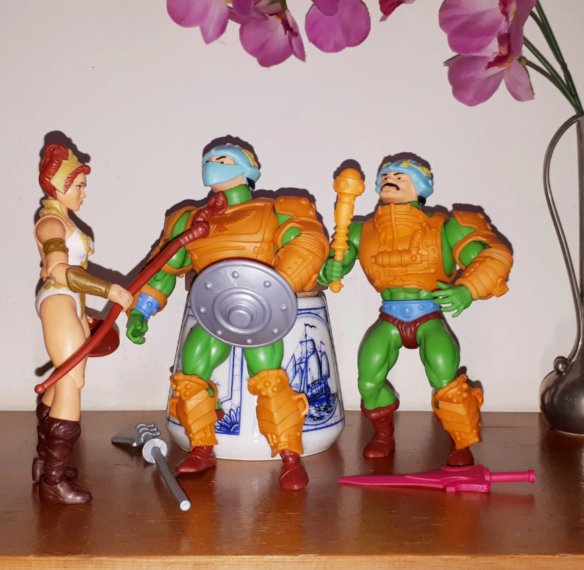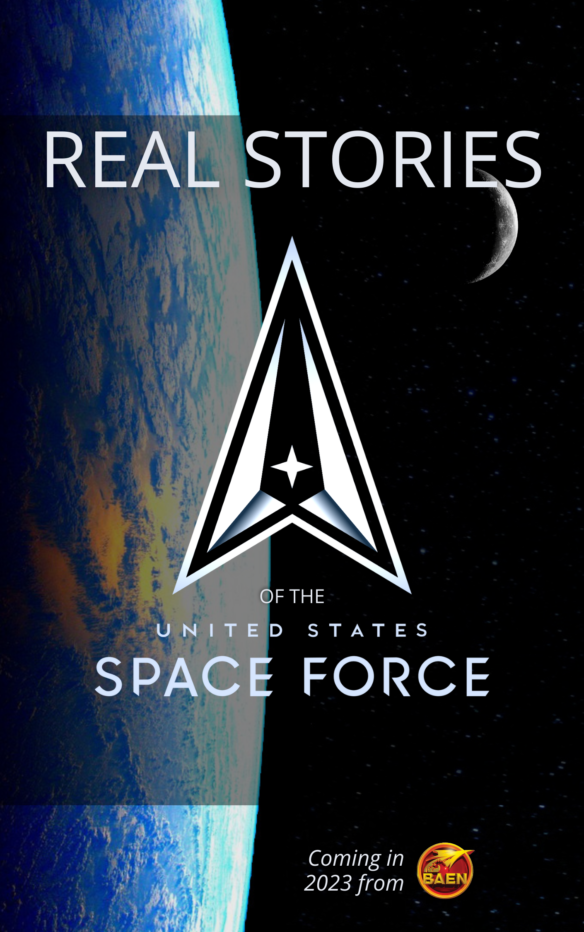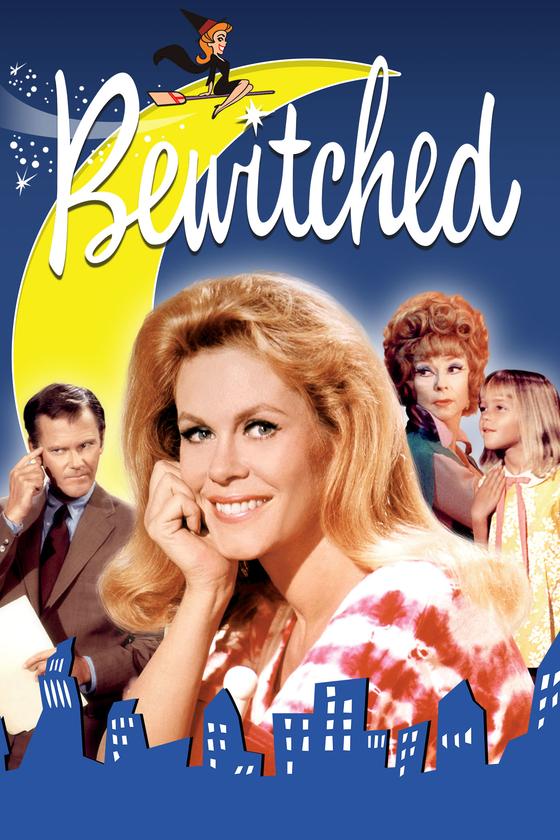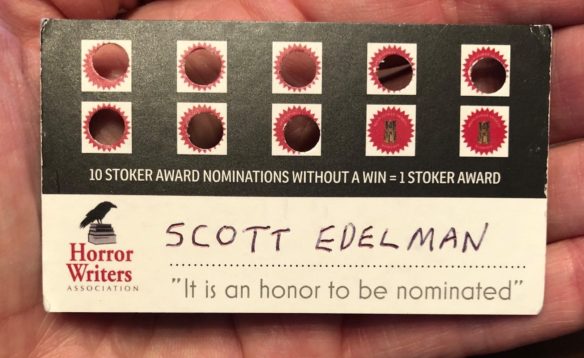(1) NETFLIX GOES UPSIDE DOWN. [Item by Mike Kennedy.] Apparently, fans of Stranger Things are night owls. When the final two episodes of ST Season 4 were released—at about 03:00 Eastern today—the Netflix streaming site was hammered hard enough to experience scattered but significant outages. “Netflix Down: Streaming Service Outage After Stranger Things 4 Release” reports Variety.
Netflix’s streaming service was unavailable for a brief period early Friday after the highly anticipated release of the final two episodes of “Stranger Things 4.”
According to global uptime-monitoring site Downdetector.com, user reports of problems with Netflix spiked around 3 a.m. ET — when “Stranger Things 4” Volume 2 went live. Complaints about errors with Netflix peaked at nearly 13,000 at the top of the hour, before the situation seemed to be resolved within a half hour.
“Stranger Things 4” already has set the record as the No. 1 English-language series on the service in its first four weeks of release, as reported by Netflix based on total hours watched. The two episodes in Season 4 Volume 2 clock in at nearly four hours of runtime total: Episode 8 is 85 minutes and Episode 9 is 150 minutes.
(2) BOB MADLE DOING FINE AT 102. [Item by Curt Phillips.] I just got off the phone with Bob Madle and thought I’d give you an update. He sounds great, and his daughter Jane told me that Bob’s health is excellent. Neither of them ever caught Covid, and Bob spends a lot of time enjoying beer and baseball. He is, as you might guess, an Oakland A’s fan. He’s been following that team since the 1930’s when they were the Philadelphia Athletics. We spent 45 min or so discussing sf magazines, and Bob’s memory is as solid as a rock. He recalled pulp trivia from 90 years ago as if it happened yesterday. So, 102 years old and going strong. A fannish immortal in every way!
(3) STEPHENSON PROFILE. In the Washington Post, Theo Zenou interviews Neal Stephenson on the 30th anniversary of Snow Crash. The interview focuses on Stephenson’s role in tech projects, including founding (with Bitcoin Foundation co-chair Peter Vessenes), Lamina1, “a start-up that will use blockchain technology to build an ‘open metaverse.’” Zenou explains that Stephenson has been involved part-time with tech his entire life, and became employee #1 of Blue Origin after he and Jeff Bezos went to a screening of October Sky in 1999. “Neal Stephenson’s ‘Snow Crash’ predicted metaverse and hyperinflation”.
…Stephenson’s vision for Lamina1 (meaning “layer one” in Latin) is to empower the creators of these experiences. He explained, “We want to create a structure of smart contracts and other utilities that will make it easier for people who want to build Metaverse applications to do that in the first place, and then to get compensated if it turns out that people like and want to pay for the experiences they’re creating.”…
(4) FIGURING OUT THE ENDING. If you didn’t see Cora Buhlert’s story when we linked to the tweets in May, you can now read “Masters-of-the-Universe-Piece Theatre: ‘The Rescue’” as a post on her blog.

“You had one job, Corporal, one job. Protect Prince Adam, with your life, if necessary. And you failed. I swear, if something happens to Adam, you will be scrubbing toilets for the rest of your life.”
“Yes, Captain.”
“Don’t be so hard on the Corporal, Teela. It wasn’t his fault.”
“I know. I should have gone with Adam. Oh Father, what if something happens to him?”
“We’ll find Adam and save him. I promise.”
Meanwhile, in the dungeons of Snake Mountain…
(5) HAVE AN IDEA FOR A SPACE FORCE STORY? C. Stuart Hardwick is editing an anthology for Baen, Real Stories of the US Space Force, and has put out a Call For Submissions. See full details at the link.

The US Space Force has a PR problem. Several, in fact. It was not Donald Trump’s idea. It did not steal its iconography from Star Trek. It is not just a lunatic scheme to expand the military-industrial complex by sending battleships into space. Yet judging from social media, many think all these things and more.
Space has become critical not only to the military but to the economy and all aspects of daily life, and as we stand at the dawn of a new age of space commerce, that’s only going to intensify, and several nations have already developed capabilities to deny, degrade, and disrupt access to and utilization of space–based assets, whether to degrade US Military capability or as a direct economic attack.
Like it or not, the militarization of space started long ago, threats are already up there, and wherever people and their interests go next, so too will go conflict, intrigue, heroes and villains, everything that comprises good stories….
WHAT WE WANT
Stories that grab us from the start and stay with us for days. Scientifically plausible drama about people facing interesting challenges related to the US Space Force or more generally, the policing and defense of near-Earth space and related issues, now or in the foreseeable future (the next century or so).
Stories don’t have to take place in space, involve the actual US Space Force, or be hard sci-fi, but they should help illustrate in some way how space technology shapes modern civilization in critical, often overlooked ways, how it is now or soon may come under threat, and how it might be defended now and into the future. See this page for ideas and background.
(6) A SEVENTIES LOOK AT FANHISTORY. Fanac.org has added “Minicon 10 (1975)-History of the MFS-Poul Anderson, Gordon Dickson, Clifford Simak, Bob Tucker” to its YouTube channel.
Minicon 10 (1975) – History of the MFS – Poul Anderson, Gordon Dickson, Clifford Simak, Bob Tucker & more:
Minicon 10 was held April 18-20, 1975 in Minneapolis. This panel discussion, orchestrated by Gordy Dickson, majors in history and anecdotes of the 1940s Minneapolis Fantasy Society (MFS). Particpants: Kenny Gray, Poul Anderson, Oliver Saari, Gordon Dickson, Grace Riger, Bob Tucker, and Clifford Simak. A high percentage of the MFS members went on to sell professionally to the magazines.
The panel begins with the flowering of MFS after Clifford Simak moved to town, to anecdotes about late night hero-saving plot sessions to the true identity of Squanchfoot (hint: Simak’s City was dedicated to him).
You’ll hear about the softball games in which many Saaris participated, the origin of Twonk’s disease, how Poul became an MFS member and more.
There’s silly story writing, an imitation Red Boggs, and a mass induction into the MFS. For those that live(d) in Minneapolis, and for those that didn’t, this recording provides an affectionate look at the early MFS…Many thanks to Geri Sullivan and the Video Archeology project for providing the recording.
(7) WHERE DID THE TIME GO. Lincoln Michel tackles the question “Why Does It Take So Long to Publish a Book?” in his Counter Craft newsletter.
… For this post, I’m just talking about the last part: how long it takes to publish a book once you sell it to a traditional publisher. Often, unpublished and self-published authors are baffled at turn around time for books. This discourse was most recently kicked off by a tweet asking authors how they would feel if a publisher offered to publish their book yet it would take 2 years and they’d have to cut 10,000 words. The replies were filled with a lot of unpublished authors saying “that’s way too long!” and/or “that’s way too many words to cut!” and then a lot of published authors saying “uh, this is completely standard in publishing?”
…To be very clear, getting published by a good publisher in no way guarantees you’ll get much attention or sell many copies. Yet if you want any chance of getting those things, your publisher needs a lot of time to pitch your book to distributors and bookstores and to do all of the publicity and marketing.
This—the general publicity, marketing, and distribution—is where much of the publishing time disappears. And it’s the kind of stuff you might not realize if you aren’t a traditionally published author. Things like major bookstore orders (including Amazon) are set long before a book is published. Anticipated book lists and “buzz” begins well in advance, sometimes before books are even finished being written. Review copies get sent to reviewers months before books are published, so that reviews can appear when the book does. And so on and so forth.
In addition to the distribution, marketing, and publicity there are other important steps if you want a professional book, especially editing (big scale stuff), copyediting (line level stuff), proofreading (typos). There are many other steps here too such as getting blurbs and getting cover art but thankfully many of these can be done concurrently with the other steps timewise….
(8) SWIFT DEPARTURE. Deadline reports “‘Tom Swift’ Canceled By CW After One Season”.
Tom Swift has swiftly gotten the boot at CW.
The low-rated, Nancy Drew spinoff only launched on May 31 and has aired six episodes to date. The series, which features a predominantly Black cast, started off as an unconventional backdoor pilot, with only Tian Richards (as Tom) getting an introduction on Nancy Drew last season. The rest of the characters were cast after the project was picked up to series in August.
We hear CBS Studios, which is behind Tom Swift, is trying to extend the options on the cast, which expire today, and plans to shop the series elsewhere.
The CW brass have said that they like the show creatively. The cancellation is said to be performance-based as Tom Swift is among the CW’s least watched series on linear, with 535K viewers in Live+7, as well as on streaming….
(9) THERE IS CRYING IN TV. A show you may not have even known was in the works has also stumbled before making it out of the cornfield: “‘Field of Dreams’ TV Series Dropped at Peacock”.
A series adaptation of Field of Dreams has struck out at Peacock, The Hollywood Reporter has learned.
The Mike Schur-created drama based on the 1989 Kevin Costner-starring baseball-focused film was picked up straight to series in August 2021 but will not stream on the platform, according to a source with knowledge.
Universal Television, where Schur’s Fremulon shingle holds an overall deal, is in the process of talking to interested buyers.
Schur is the creator of NBC’s The Good Place, along with serving as the co-creator of Parks and Recreation, Brooklyn Nine-Nine and Rutherford Falls. Among other credits, he is an executive producer on HBO Max’s Emmy-winning Hacks and Freevee’s upcoming Primo….
(10) 124C41+. Holden Karnosky’s article “The Track Record of Futurists Seems … Fine” at Cold Takes tries to find another way of testing whether it would be a waste of time to put artificial intelligence to work as futurists. One idea was to look at the futures posited by some famous sf writers.
…The idea is something like: “Even if we can’t identify a particular weakness in arguments about key future events, perhaps we should be skeptical of our own ability to say anything meaningful at all about the long-run future. Hence, perhaps we should forget about theories of the future and focus on reducing suffering today, generally increasing humanity’s capabilities, etc.”
But are people generally bad at predicting future events? Including thoughtful people who are trying reasonably hard to be right? If we look back at prominent futurists’ predictions, what’s the actual track record? How bad is the situation?
…Recently, I worked with Gavin Leech and Misha Yagudin at Arb Research to take another crack at this. I tried to keep things simpler than with past attempts – to look at a few past futurists who (a) had predicted things “kind of like” advances in AI (rather than e.g. predicting trends in world population); (b) probably were reasonably thoughtful about it; but (c) are very clearly not “just selected on those who are famous because they got things right.” So, I asked Arb to look at predictions made by the “Big Three” science fiction writers of the mid-20th century: Isaac Asimov, Arthur C. Clarke, and Robert Heinlein.
These are people who thought a lot about science and the future, and made lots of predictions about future technologies – but they’re famous for how entertaining their fiction was at the time, not how good their nonfiction predictions look in hindsight. I selected them by vaguely remembering that “the Big Three of science fiction” is a thing people say sometimes, googling it, and going with who came up – no hunting around for lots of sci-fi authors and picking the best or worst.2
Alan Baumler kept score while reading the article:
- One (Asimov) who looks quite impressive – plenty of misses, but a 50% hit rate on such nonobvious predictions seems pretty great.
- One (Heinlein) who looks pretty unserious and inaccurate.
- One (Clarke) who’s a bit hard to judge but seems pretty solid overall (around half of his predictions look to be right, and they tend to be pretty nonobvious).
(11) MEMORY LANE.
1972 – [By Cat Eldridge.] Yes, I know I wrote up Bewitched earlier this year. Or at least I think II did. I do lose track after a while. At any rate, tonight we’ve come to eulogize its ending fifty years ago on this evening. The show aired from September 17, 1964 to July 1, 1972 on ABC for two hundred and fifty-four episodes — seventy-four in black-and-white for the first two years, 1964 to 1966) and one hundred eighty in color for the final three years, 1966 to 1972.
I cannot say that I’ve watched all of the series, but I’ve watched a fair amount of it and it will unashamedly admit that I really do like it. It’s not a complicated series, nor a particularly deep series, but it’s both fun and charming, and it is inoffensive.
So why did Bewitched come to an end? Was it the ratings? That certainly was part of that problem as by by the end of the next-to-last season the ratings for it had noticeably dropped and the show did not even rank in the list of the top thirty programs. But that wasn’t the actual reason it got cancelled.
That was down to Elizabeth Montgomery who had grown tired of the series and wanted to move on to new roles. Well, they didn’t happen. The only thing she was on Password, a game show where she was a celebrity contestant for nearly ninety episodes.
She died at aged sixty-two of an untimely diagnosed cancer.

(12) TODAY’S BIRTHDAYS.
[Compiled by Cat Eldridge.]
- Born July 1, 1934 — Jean Marsh, 88. She was married to Jon Pertwee but it was before either were involved in Whovian affairs. She first appeared alongside The First Doctor in “The Crusade” as Lady Joanna, the sister of Richard I (The Lionheart). She returned later that year as companion Sara Kingdom in “The Daleks’ Master Plan”. And she’d return yet again during the time of the Seventh Doctor in “Battlefield” as Morgana Le Fay. She’s also in Unearthly Stranger, Dark Places, Return to Oz, Willow as Queen Bavmorda and The Changeling.
- Born July 1, 1935 — David Prowse. The physical embodiment of Darth Vader in the original Star Wars trilogy. Ok, it’s been a very long time since I saw Casino Royale but what was Frankenstein’s Creation doing there, the character he played in his first ever role? That he then played the role in The Horror of Frankenstein and Frankenstein and the Monster from Hell, Hammer Films a few years later surprises me not. He shows up in Gilliam’s Jabberwocky according to IMDB as Red Herring and Black Knights (and no I’ve no idea what that means). Finally he’s the executioner in The People That Time Forgot, a film that’s very loosely based off of several Burroughs novels. (Died 2020.)
- Born July 1, 1942 — Genevieve Bujold, 80. We would have had a rather different look on Voyager if things had played out as the producers wished, for Bujold was their first choice to play Janeway. She quit after a day and a half of shooting, with the public reason being she was unaccustomed to the hectic pace of television filming. What the real reason was we will never know.
- Born July 1, 1952 — Dan Aykroyd, 70. Though best known as Dr. Raymond Stantz in the original Ghostbusters films (which he wrote with Harold Raimis though he himself came up with the Ghostbusters concept), Ackroyd actually showed up in his first genre role a year earlier in Twilight Zone: The Movie as Passenger / Ambulance Driver. He’s reprised his role in Ghostbusters: Afterlife. And he was the narrator of the Hotel Paranormal series that just ended.
- Born July 1, 1955 — Robby the Robot, aged, well, 67. Yes, this is this official birthday of the robot in Forbidden Planet, which debuted a year later. Over the years he would also be seen is such films and series as The Invisible Boy,Invasion of the Neptune Men, The Twilight Zone, Lost In Space, The Addams Family, Wonder Woman and Gremlins. He was in a 2006 commercial for AT&T. Well very, very briefly.
- Born July 1, 1964 — Charles Coleman Finlay, 58. The Traitor to the Crown series is his best known work. His first story, “Footnotes”, was published in The Magazine of Fantasy and Science Fiction where many of his stories have since been published. Editor for six years of The Magazine of Fantasy and Science Fiction until February of last year. At the World Fantasy Awards in 2021 he received the Special Award – Professional for editing The Magazine of Fantasy & Science Fiction.
- Born July 1, 1981 — Genevieve Valentine, 41. Author of the superb Persona novel and also she scripted a Catwoman series, working with artists Garry Brown and David Messina. Her first novel, Mechanique: A tale of the Circus Tresaulti, won the Crawford Award for a first fantasy novel. She scripted a run of Xena: Warrior Princess, and scripted Batman & Robin Eternal as well.
(13) COMICS SECTION.
- Non Sequitur shows what would happen if Hollywood added “improvements” to Noah’s Ark. (Which, of course, they’ve already done, but play along with the joke.)
(14) AMAZON PRIME TEASER TRAILER FOR PAPER GIRLS. [Item by Daniel Dern.] The comic book Paper Girls — which involves time travel among other tropes, so it’s inarguably science fiction — which I may have stumbled on either browsing my library’s “new graphic novels” or during the year-ish I subscribed to ComiXology’s monthly streaming digital comics service, or a mix, is about to be an Amazon Prime series, per this trailer I just saw:
It looks promising, to say the least.
Want to read ’em first? If your public library (or interlibrary loan) doesn’t have them, you can e-borrow/read issues 1-30 free through HooplaDigital.com — either as Volumes 1-6, or in 3 borrows (remember, Hoopla allows a set # borrows/month) by going for the Deluxe Edition Books (10 issues each), as this search shows.
(I’ve read ’em; recommended!)
(15) USHERING IN THE ATOMIC AGE. Now on the block at Heritage Auctions is Capt. Robert Lewis’ ‘Enola Gay’ logbook documenting the atomic bombing of Hiroshima. Bidding was up to $400,000 when last checked.
Captain Robert A. Lewis, the co-pilot of the B-29 Superfortress called the Enola Gay, wrote those immortal words shortly after 8:16 a.m. on Aug. 6, 1945, moments after he and his crewmates dropped the atomic bomb on the citizens of Hiroshima. The course of history changed at that precise moment: A beautiful day exploded into a blinding bright light, a nuclear fireball leveled a city, at least 100,000 died, and a world war neared its end.
And there, high above it all yet so much a part of the devastation below, was Robert Lewis to chronicle every spectacular and awful moment. He was among the dozen Enola Gay crewmen who delivered the 15-kiloton bomb codenamed “Little Boy” to Japan and the only person aboard who kept a detailed account of the top-secret mission that changed the world.
Lewis’ 11-page chronicle of those few minutes is among the most important documents of the 20th century, a harrowing and oft-heartbreaking account of those very moments between the pre-atomic and post-atomic world – before Hiroshima was struck by the noiseless flash, consumed by fire and swallowed by a mushroom cloud. The public has not seen it since it sold in 2002 during a famous auction of publisher Malcolm Forbes’ American historical documents.
(16) COULD WE DECODE ALIEN PHYSICS? [Item by SF Concatenation’s Jonathan Cowie.] Matt O’Dowd at PBS Space Time asks “Could We Decode Alien Physics?”

How hard can it really be to decode alien physics and engineering? It’s gotta map to our own physics – I mean, we live in the same universe. We start by noticing that the alien technology seems to use good ol’ fashioned electronics, even if it is insanely complex. We know this because the particle carried by the alien circuitry looks like the electron. We decide this through a process of elimination.
(17) FOR YOUR VIEWING PLEASURE. JustWatch tracked themoviedb.org data to measure “Top 10 Sci-Fi Movies and TV Shows in the US in June.”
| Rank* | Movies | TV shows |
| 1 | Everything Everywhere All at Once | Obi-Wan Kenobi |
| 2 | Jurassic World: Fallen Kingdom | For All Mankind |
| 3 | Jurassic World | Severance |
| 4 | Spider-Man: No Way Home | Teenage Mutant Ninja Turtles |
| 5 | Doctor Strange in the Multiverse of Madness | Westworld |
| 6 | Morbius | Star Trek: Strange New Worlds |
| 7 | Jurassic Park | Doctor Who |
| 8 | Ghostbusters: Afterlife | Night Sky |
| 9 | Crimes of the Future | The Man Who Fell to Earth |
| 10 | Moonfall | The Twilight Zone |
*Based on JustWatch popularity score. Genre data is sourced from themoviedb.org
(18) THE BRAVE LITTLE TOASTED. Gizmodo takes stock of its accomplishments as “LightSail 2 Mission Poised to Burn Up in Earth’s Atmosphere”.
For the past three years, a tiny loaf-of-bread-sized spacecraft with gigantic wings has been sailing on sunbeams in low Earth orbit. LightSail 2 has far exceeded its life expectancy and proven that solar sails can indeed be used to fly spacecraft. But its journey around our planet is sadly coming to an end, as Earth’s atmosphere drags the spacecraft downward where it will eventually burn up in atmospheric flames.
The Planetary Society’s LightSail 2 launched in June 2019 and unfurled its 344-square-foot (32-square-meter) solar sail a month later. Just two weeks after spreading its wings, LightSail 2 gained 2 miles (3.2 kilometers) of altitude, making this experiment a success….
(19) NIMOY THEATER UPDATE. A new era for the Center for the Art of Performance UCLA is underway as they continue to develop the UCLA Nimoy Theater. “The Nimoy sets new horizon for the arts community”. You can see an overview of the project here.
Located near the UCLA campus on Westwood Boulevard, The Nimoy is a reimagining of the historic Crest Theater as a flexible, state-of-the-art performance space.
Opening in late March 2023, the intimately-scaled venue is named for artist, actor, director and philanthropist Leonard Nimoy. Shawmut Construction has been working steadily to renovate the venue, which will be equipped with new and green technologies to support the creation and presentation of innovative work.
The Nimoy will be a home for artists representing a broad diversity of voices, viewpoints, ideas and creative expressions in music, dance, theater, literary arts, digital media arts and collaborative disciplines. The inaugural season will feature a large slate of amazing shows, including new work by the legendary Kronos Quartet, “live documentarian” filmmaker Sam Green, and a collaboration between two essential musical voices of Los Angeles, Quetzal and Perla Batalla.

(20) VIDEO OF THE DAY. [By Martin Morse Wooster.] Alasdair Beckett-King asks, “What if Sherlock Holmes and Dr. Watson got email from spammers claiming to be “sexy women from Moldova?” “Hot Detectives in Your Area”.
[Thanks to Andrew Porter, Michael Toman, Cat Eldridge, Curt Phillips, Daniel Dern, Alan Baumler, SF Concatenation’s Jonathan Cowie. Mike Kennedy, Martin Morse Wooster, JJ, and John King Tarpinian, and Chris Barkley for some of these stories. Title credit belongs to File 770 contributing editor of the day Andrew (not Werdna).]



